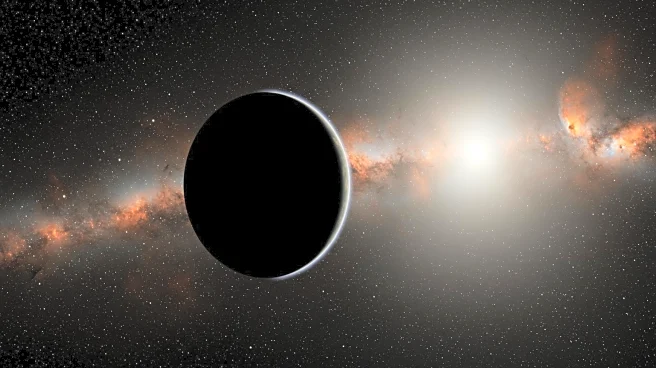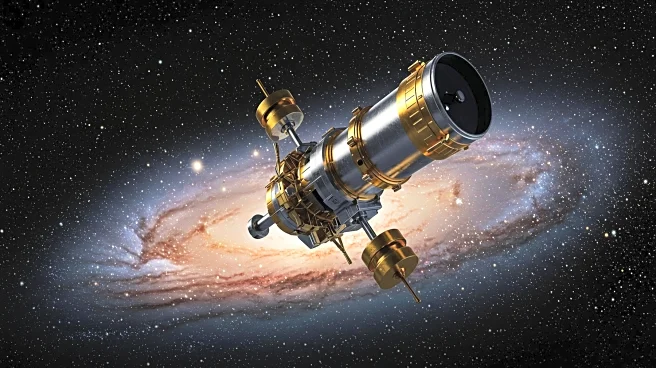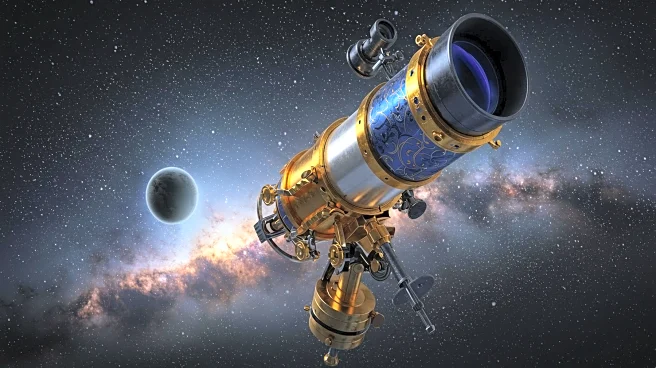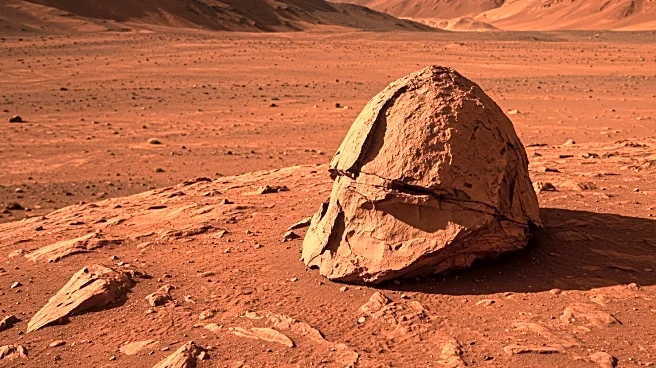Rapid Read • 8 min read
The James Webb Space Telescope (JWST) has observed TRAPPIST-1d, a planet in the TRAPPIST-1 system, and found it lacks an Earth-like atmosphere. This discovery was made after analyzing data from two consecutive transits observed in November 2022. Researchers from Canada, the UK, France, and the USA concluded that TRAPPIST-1d does not have the atmospheric conditions necessary to support liquid water, which is crucial for habitability. The findings, published in The Astrophysical Journal, suggest that TRAPPIST-1d is unlikely to be a habitable planet, although other planets in the system may still hold potential.
AD
The absence of an Earth-like atmosphere on TRAPPIST-1d is significant as it narrows the list of potentially habitable exoplanets. This finding impacts the search for life beyond Earth, as TRAPPIST-1d was considered a promising candidate due to its location in the habitable zone. The research highlights the challenges posed by red dwarf stars, which can strip atmospheres from planets due to their frequent flaring. Understanding the atmospheric conditions of exoplanets is crucial for identifying environments that could support life, and the JWST's observations provide valuable insights into the habitability of planets around red dwarfs.
Despite the setback with TRAPPIST-1d, researchers remain hopeful about the other planets in the TRAPPIST-1 system. The outer planets, such as TRAPPIST-1e, f, g, and h, may still possess atmospheres capable of supporting life. Future observations and missions, including the European Space Agency's PLATO, are expected to continue the search for habitable exoplanets. These efforts will focus on identifying atmospheric signatures that indicate the presence of water and other life-supporting elements.
The study of TRAPPIST-1d and its atmosphere contributes to the broader understanding of planetary formation and evolution under stellar irradiation. The findings also underscore the importance of planetary magnetic fields in protecting atmospheres from stellar flares. As red dwarf stars are common in the Milky Way, the research has implications for the potential habitability of numerous exoplanets orbiting similar stars.
AD
More Stories You Might Enjoy











